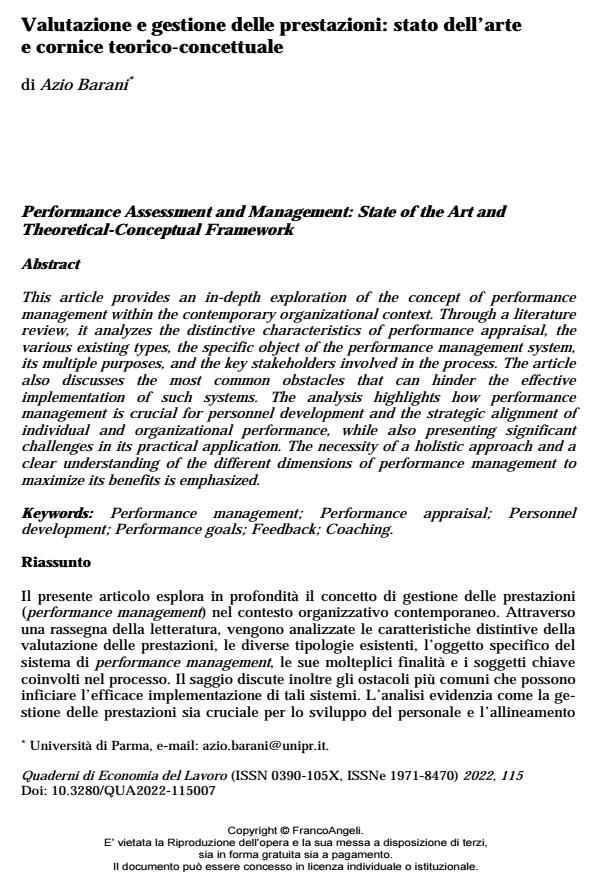Performance Assessment and Management: State of the Art and Theoretical-Conceptual Framework
Journal title QUADERNI DI ECONOMIA DEL LAVORO
Author/s Azio Barani
Publishing Year 2025 Issue 2022/115
Language Italian Pages 18 P. 163-180 File size 106 KB
DOI 10.3280/QUA2022-115007
DOI is like a bar code for intellectual property: to have more infomation
click here
Below, you can see the article first page
If you want to buy this article in PDF format, you can do it, following the instructions to buy download credits

FrancoAngeli is member of Publishers International Linking Association, Inc (PILA), a not-for-profit association which run the CrossRef service enabling links to and from online scholarly content.
This article provides an in-depth exploration of the concept of performance management within the contemporary organizational context. Through a literature review, it analyzes the distinctive characteristics of performance appraisal, the various existing types, the specific object of the performance management system, its multiple purposes, and the key stakeholders involved in the process. The article also discusses the most common obstacles that can hinder the effective implementation of such systems. The analysis highlights how performance management is crucial for personnel development and the strategic alignment of individual and organizational performance, while also presenting significant challenges in its practical application. The necessity of a holistic approach and a clear understanding of the different dimensions of performance management to maximize its benefits is emphasized.
Keywords: Performance management; Performance appraisal; Personnel development; Performance goals; Feedback; Coaching.
Azio Barani, Valutazione e gestione delle prestazioni: stato dell’arte e cornice teorico-concettuale in "QUADERNI DI ECONOMIA DEL LAVORO" 115/2022, pp 163-180, DOI: 10.3280/QUA2022-115007